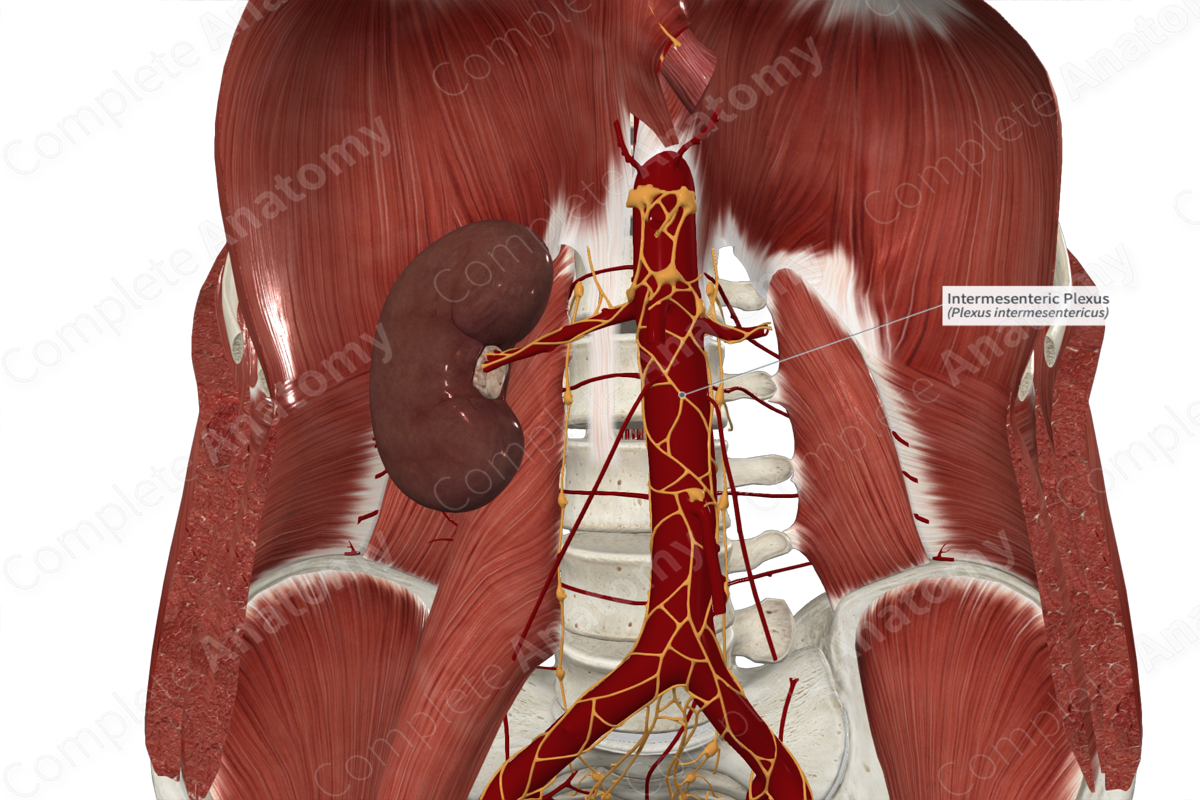
Quick Facts
Sympathetic Contribution: Lumbar sympathetic outflow (L1-L2) and one of four lumbar splanchnic nerves (L1-L4).
Parasympathetic Contribution: Posterior vagal trunk of vagus nerve.
Course: Follows arteries, ducts, and occasionally somatic nerves to targets.
Sympathetic Supply: Hindgut and pelvic organs.
Parasympathetic Supply: Hindgut and pelvic organs.
Contributing Nerves
The lumbar preganglionic sympathetic nerves arise from the first and second lumbar (L1 and L2) segments and synapse in lumbar paravertebral chain ganglia. Some descend through the sympathetic trunk, from the first or second lumbar levels (L1/L2) to the third and fourth lumbar levels (L3/L4), as there is no outflow below the second lumbar level (L2). Postganglionic neurons from the first to fourth lumbar nerve (L1-L4) form lumbar splanchnic nerves. These terminate on celiac and superior mesenteric prevertebral ganglia. They are joined by preganglionic parasympathetic nerves from the vagus nerve. Sympathetic (postganglionic) and parasympathetic (preganglionic) nerves form this periarterial (perivascular) plexus which is located on the sides and front of the aorta, between the superior and inferior mesenteric arteries.
Course
The intermesenteric plexus passes inferiorly as a loose plexus on the abdominal aorta, between the emergence of the superior mesenteric and inferior mesenteric artery.
Branches
The intermesenteric plexus follows the course of the gonadal, inferior mesenteric, and internal iliac arteries and their branches. Note, these are postganglionic sympathetic, but preganglionic parasympathetic nerves.
Supplied Structures
The intermesenteric plexus supplies the hindgut and pelvic organs. In males, the plexus also gives innervation to the testis, whereas in females the plexus innervates the ovaries.
Visceral sensory fibers carrying afferents from the aforementioned organs pass through the intermesenteric plexus.
Learn more about this topic from other Elsevier products





